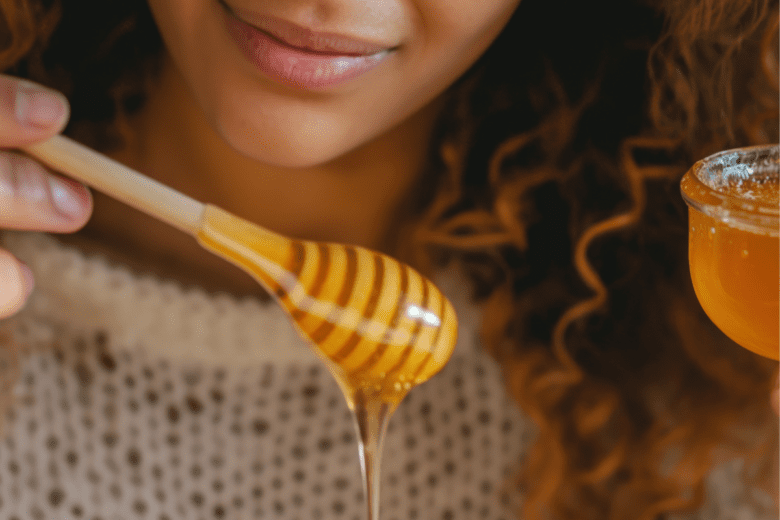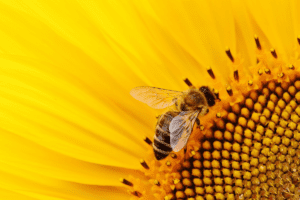Bees are indispensable to the environment and agriculture due to their crucial role as pollinators. Approximately one-third of the food we consume relies on pollination, primarily by bees. They facilitate the reproduction of flowering plants by transferring pollen from one flower to another, which not only helps in producing fruits, vegetables, and seeds but also maintains the biodiversity and health of ecosystems. Without bees, many plants, including crops that humans and other animals rely on for food, would struggle to reproduce. This would lead to a significant decline in food production and disrupt entire ecosystems, demonstrating the vital role bees play in sustaining life on Earth.
Beyond their ecological contributions, bees also produce honey, a natural sweetener with numerous health benefits, and beeswax, used in various products ranging from cosmetics to candles. Their impact on both natural and human-made environments underscores the need for their conservation. In recent years, however, bee populations have faced significant declines due to factors such as habitat loss, pesticide use, climate change, and disease. This decline poses a serious threat not only to global food security but also to biodiversity, making the protection and understanding of bees more important than ever.
Overview of the Structure of the Hive
A beehive is a complex, well-organized structure that houses a highly social community of bees, each playing a specific role to ensure the colony’s survival and efficiency. The hive consists of three primary types of bees: the queen, worker bees, and drones. Each type has distinct physical characteristics and responsibilities within the colony, contributing to the hive’s intricate social structure.
1. **The Queen**: The queen is the largest bee in the hive and the only fertile female. Her primary role is to lay eggs, which she does almost continuously, ensuring the colony’s growth and sustainability. The queen also produces pheromones that help regulate the colony’s activities and maintain social harmony.
2. **Worker Bees**: Worker bees are non-reproductive females and make up the majority of the hive’s population. They perform various tasks throughout their life, including cleaning the hive, feeding larvae, tending to the queen, producing honey and beeswax, and guarding the hive. In the later stages of their life, they become foragers, collecting nectar, pollen, and water to sustain the colony.
3. **Drones**: Drones are the male bees whose sole purpose is to mate with a virgin queen. They do not participate in typical hive activities like foraging or hive maintenance. After mating, drones die, and those that do not mate are often expelled from the hive before winter.
The hive itself is meticulously structured, with hexagonal cells made of beeswax serving as storage for honey, pollen, and as nurseries for developing bees. This efficient use of space and resources reflects the highly organized and cooperative nature of bee colonies. Understanding the roles and interactions within a hive provides insight into the remarkable social structure and efficiency of bees, highlighting their importance not just as pollinators but as sophisticated, collaborative communities.
Types of Bees in the Hive
Queen: The Leader of the Hive
Functions of the Queen
The queen bee is the heart of the hive, responsible for laying all the eggs that will become the next generation of bees. A single queen can lay up to 2,000 eggs per day during peak season. Beyond reproduction, the queen also produces chemical signals, known as pheromones, which help maintain the unity and productivity of the colony. These pheromones regulate the behavior of worker bees, suppress the development of new queens, and keep the colony cohesive.
The Process of Creating a Queen
A new queen is created when worker bees select a young larva and feed it a special diet of royal jelly, a nutrient-rich secretion that transforms an ordinary larva into a fertile queen. This process, known as “queen rearing,” is crucial for the continuation of the hive. Once she emerges, the new queen will embark on a mating flight, during which she will mate with multiple drones. Afterward, she returns to the hive to begin her lifelong role as the colony’s primary egg-layer.
Worker Bees: The Tireless Laborers
Functions of the Worker Bees
Worker bees are the backbone of the hive, performing all the essential tasks required for the colony’s survival. These tasks include foraging for nectar and pollen, feeding the queen and larvae, cleaning the hive, producing honey and beeswax, and defending the hive from threats. Each worker bee’s role changes as she ages, reflecting a highly organized division of labor that ensures the colony’s efficiency and productivity.
The Lifecycle of Worker Bees
Worker bees go through several stages in their lifecycle, each marked by different responsibilities. Young workers start as nurse bees, caring for the larvae and the queen. As they age, they transition to tasks such as hive maintenance, nectar processing, and guarding the hive. In the final stage of their lives, they become foragers, venturing outside the hive to collect nectar, pollen, and water. This progression ensures that the most physically demanding tasks are performed by the strongest and most experienced bees.
Division of Tasks Among Worker Bees
The division of labor among worker bees is not random; it is a highly organized system where each bee performs tasks suited to her age and abilities. Younger bees, with their glands fully functional, produce royal jelly for feeding larvae. Middle-aged bees take on roles such as hive maintenance and defense, while the oldest bees, with the most experience, handle foraging. This efficient system maximizes the colony’s productivity and survival.
Drones: The Procreators of the Hive
Functions of the Drones
Drones have a singular purpose: to mate with a virgin queen from another hive. Unlike worker bees, drones do not gather nectar or pollen, produce wax, or perform hive maintenance. Their primary function is to ensure the genetic diversity and propagation of the bee population. During the mating flight, drones congregate in specific areas known as drone congregation areas, waiting for a queen to arrive.
The Lifecycle of Drones
Drones are reared in larger cells and receive more food than worker larvae. They take about 24 days to develop from egg to adult, longer than worker bees but shorter than queens. Once mature, drones leave the hive to seek mating opportunities. After mating, they die, having fulfilled their sole purpose. Those that do not mate are typically expelled from the hive as winter approaches to conserve resources.
Importance of Drones for Reproduction
Drones play a critical role in maintaining the genetic diversity and health of bee populations. By mating with queens from different hives, they contribute to the genetic variation necessary for the resilience and adaptability of bee colonies. This genetic diversity is vital for the colony’s ability to withstand diseases, pests, and environmental changes.
Interactions Among Different Types of Bees
Communication and Collaboration in the Hive
Effective communication is key to the hive’s success. Bees use a combination of pheromones, sounds, and the famous “waggle dance” to convey information. The waggle dance, performed by foraging bees, communicates the location of food sources to other bees. Pheromones play a crucial role in regulating the hive’s activities, from signaling the presence of threats to coordinating the care of the young. This complex communication system ensures that the hive operates smoothly and efficiently.
Dynamics of Work and Hierarchy
The hive’s social structure is a model of organization and cooperation. Each bee’s role is clearly defined, and the hierarchy ensures that every task is performed efficiently. The queen’s pheromones maintain social order, while the division of labor among worker bees ensures that all necessary tasks are completed. This dynamic and flexible system allows the hive to adapt to changing conditions and meet the colony’s needs effectively.
The Lifecycle of Bees
From Egg to Adult: The Stages of Development
The lifecycle of a bee consists of four main stages: egg, larva, pupa, and adult. The process begins when the queen lays an egg in a cell of the honeycomb. After three days, the egg hatches into a larva, which is fed by worker bees. The larva undergoes several molts before spinning a cocoon around itself and entering the pupal stage. Inside the cocoon, the pupa undergoes metamorphosis, eventually emerging as an adult bee. This entire process takes about 21 days for worker bees, 24 days for drones, and 16 days for queens.
Lifespan of Each Type of Bee
The lifespan of a bee varies depending on its role within the hive. Worker bees, which perform the most strenuous tasks, typically live for about six weeks during the active season. However, those born in late autumn can live for several months, sustaining the colony through the winter. Drones have a shorter lifespan, living only a few weeks to a few months, depending on when they are expelled from the hive. Queens have the longest lifespan, often living up to five years, although they are usually replaced by the colony after two to three years.
The Importance of Each Type of Bee in Maintaining the Hive
Balance and Sustainability of the Hive
The hive’s success depends on the balance and cooperation of its members. Each type of bee contributes uniquely to the colony’s overall health and functionality. The queen’s egg-laying capacity ensures population growth, worker bees’ labor sustains daily operations, and drones’ mating efforts secure genetic diversity. This balance is crucial for the colony’s sustainability and resilience.
Impact of the Absence of Each Type of Bee
The absence of any type of bee can have detrimental effects on the hive. Without a queen, the colony cannot reproduce, leading to its eventual decline. A shortage of worker bees disrupts the hive’s maintenance, food production, and defense, threatening the colony’s survival. The absence of drones limits the potential for genetic diversity, making the colony more susceptible to diseases and environmental changes. Understanding the roles and importance of each type of bee highlights the intricate balance required for a thriving hive.
Summary of the Roles of Bees in the Hive
In the intricate and highly organized world of a beehive, each type of bee plays a crucial role that ensures the survival and efficiency of the colony. The queen, as the sole fertile female, is the heart of the hive, laying thousands of eggs to sustain the population and producing pheromones that regulate the colony’s social structure. Worker bees, the tireless laborers, perform a wide range of tasks, from foraging for food and maintaining the hive to caring for the queen and larvae. Their organized division of labor ensures that the hive operates smoothly and efficiently. Drones, the male bees, have the vital role of mating with virgin queens from other colonies, contributing to the genetic diversity and health of bee populations. Each type of bee, with its unique functions and lifecycle, is indispensable to the hive’s overall health and productivity.
Reflection on the Importance of Bee Conservation
Bees are more than just pollinators; they are essential to the health of our ecosystems and the stability of our food supply. Their decline poses a serious threat to biodiversity, agriculture, and global food security. The intricate balance within a hive mirrors the delicate balance in nature, where each species plays a role in sustaining the environment. Protecting bees means safeguarding this balance, ensuring that ecosystems remain healthy and productive.
The challenges bees face today, such as habitat loss, pesticide exposure, climate change, and disease, require concerted efforts from individuals, communities, and policymakers. Supporting bee-friendly practices, such as planting diverse and native flora, reducing pesticide use, and conserving natural habitats, can make a significant difference. Additionally, supporting sustainable agricultural practices and policies that protect pollinators can help ensure the survival of these vital creatures.
In understanding the complex roles and interactions within a beehive, we gain a deeper appreciation for the sophistication of these remarkable insects and the critical importance of their conservation. By valuing and protecting bees, we contribute to the health of our planet and the well-being of future generations.

Hi, I’m James Stevan, an avid beekeeper with over a decade of experience in apiculture. My passion for bees drives me to share practical tips and insights on sustainable beekeeping. Join me as we explore the fascinating world of bees and their crucial role in our ecosystem.




